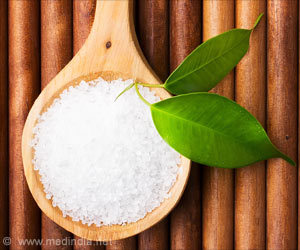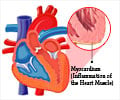Frequency of adding salt to food matters, when it comes to the risk of cardiovascular diseases
- Cardiovascular disease is one of the most common causes of mortalities in recent times
- Salt has been linked to increased hypertension leading to heart problems
- Latest //research suggests that lower frequency of adding salt to food along with a DASH diet shows promising results in preventing cardiovascular diseases
Adding Salt to Foods and Risk of Cardiovascular Disease
Go to source). Additionally, the study found a link between a lower risk of cardiovascular disease (CVD) and the least amount of salt added to foods when combined with the DASH diet.
Global Burden of Cardiovascular Diseases and Risk Factors, 1990-2019: Update From the GBD 2019 Study
Go to source). It is expected that IHD and stroke will remain the leading cause for deaths due to CVD well into 2040 (3✔ ✔Trusted Source
Global Epidemiology of Ischemic Heart Disease: Results from the Global Burden of Disease Study
Go to source). High sodium consumption can raise blood pressure, and high blood pressure is a major risk factor for heart disease and stroke. Most of the sodium we consume is in the form of salt (4✔ ✔Trusted Source
Dietary Reference Intakes for Sodium and Potassium
Go to source).
The Dietary Approaches to Stop Hypertension (DASH) emphasizes in having fruits, vegetables, fat-free/low-fat dairy, whole grains, nuts and legumes, and limits total and saturated fat, cholesterol, red and processed meats, sweets, added sugars, and sugar-sweetened beverages. It was developed to treat hypertension without medication and successfully demonstrated a clinically meaningful way to lower blood pressure .
Frequency of Adding Salt to Food Matters
Researchers examined the relationship between the frequency of adding salt to food (never/rarely, sometimes, usually, always) and incident cardiovascular disease risk in a prospective cohort of 176,570 participants (about 56 years old and 55% women). On the ground level, researchers collected information from participants using a web-based questionnaire on the frequency of adding salt; a 24-hour dietary recall was conducted at baseline and over one to five rounds over a three-year period.DASH diet and Adding Salt
A DASH diet score was calculated to evaluate the joint association of diet and adding salt to food on cardiovascular disease risk. The 24-hour sodium excretion was estimated using casual spot urinary concentrations. Data on cardiovascular disease events were collected through medical history and data on hospital admissions, questionnaires, and death register data.
After a 12-year follow-up, the number of documented incident cases were 9,963 for total cardiovascular disease events.
Researchers found a lower frequency of adding salt to food was significantly related to a lower risk of total cardiovascular diseases.
Participants most likely to less frequently add salt, compared with a higher frequency of adding salt, were more likely to be women. They also were white, had a lower body mass index, were not a current smokers, were more physically active and had moderate alcohol consumption. These participants were also more likely to adhere to a DASH-style diet and consumed more fruits, vegetables, nuts and legumes, whole grains, low-fat dietary but less sugar-sweetened drinks or red/processed meats than those with a higher frequency of adding salt to foods.
Researchers found that people who don’t shake on a little extra salt to their foods very often had a much lower risk of heart disease events, regardless of lifestyle factors and pre-existing disease and also found that when patients combine a DASH diet with a low frequency of adding salt, they had the lowest heart disease risk. This is meaningful as reducing additional salt to food, rather than removing salt entirely, is an achievable, modifiable risk factor that patients can make without too much sacrifice on their part.
References:
- Adding Salt to Foods and Risk of Cardiovascular Disease - (https://www.jacc.org/doi/10.1016/j.jacc.2022.09.039)
- Global Burden of Cardiovascular Diseases and Risk Factors, 1990-2019: Update From the GBD 2019 Study - (https://pubmed.ncbi.nlm.nih.gov/33309175/)
- Global Epidemiology of Ischemic Heart Disease: Results from the Global Burden of Disease Study - (https://www.cureus.com/articles/36728-global-epidemiology-of-ischemic-heart-disease-results-from-the-global-burden-of-disease-study)
- Dietary Reference Intakes for Sodium and Potassium - (https://www.ncbi.nlm.nih.gov/books/NBK538102/)
Source-Medindia
















